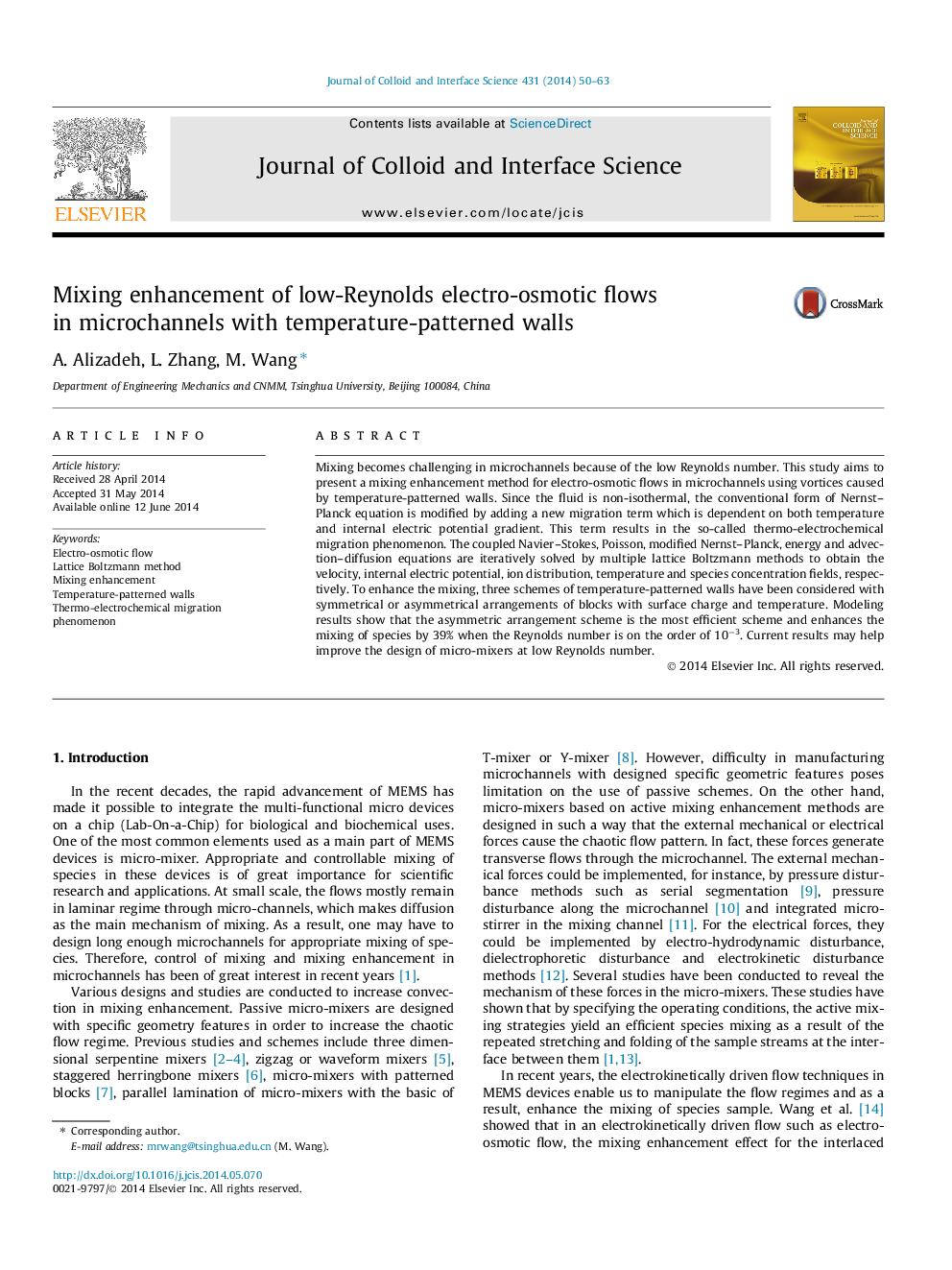| Article ID | Journal | Published Year | Pages | File Type |
|---|---|---|---|---|
| 607106 | Journal of Colloid and Interface Science | 2014 | 14 Pages |
•For non-isothermal fluids, the Nernst–Planck equation is modified by adding a thermo-electrochemical migration term.•Vortices formed near temperature patterned-walls cause mixing enhancement for low Reynolds flows.•The asymmetric arrangement scheme enhances mixing of species by 39% at Reynolds number on order of 10−3.
Mixing becomes challenging in microchannels because of the low Reynolds number. This study aims to present a mixing enhancement method for electro-osmotic flows in microchannels using vortices caused by temperature-patterned walls. Since the fluid is non-isothermal, the conventional form of Nernst–Planck equation is modified by adding a new migration term which is dependent on both temperature and internal electric potential gradient. This term results in the so-called thermo-electrochemical migration phenomenon. The coupled Navier–Stokes, Poisson, modified Nernst–Planck, energy and advection–diffusion equations are iteratively solved by multiple lattice Boltzmann methods to obtain the velocity, internal electric potential, ion distribution, temperature and species concentration fields, respectively. To enhance the mixing, three schemes of temperature-patterned walls have been considered with symmetrical or asymmetrical arrangements of blocks with surface charge and temperature. Modeling results show that the asymmetric arrangement scheme is the most efficient scheme and enhances the mixing of species by 39% when the Reynolds number is on the order of 10−3. Current results may help improve the design of micro-mixers at low Reynolds number.
Graphical abstractFigure optionsDownload full-size imageDownload high-quality image (80 K)Download as PowerPoint slide
